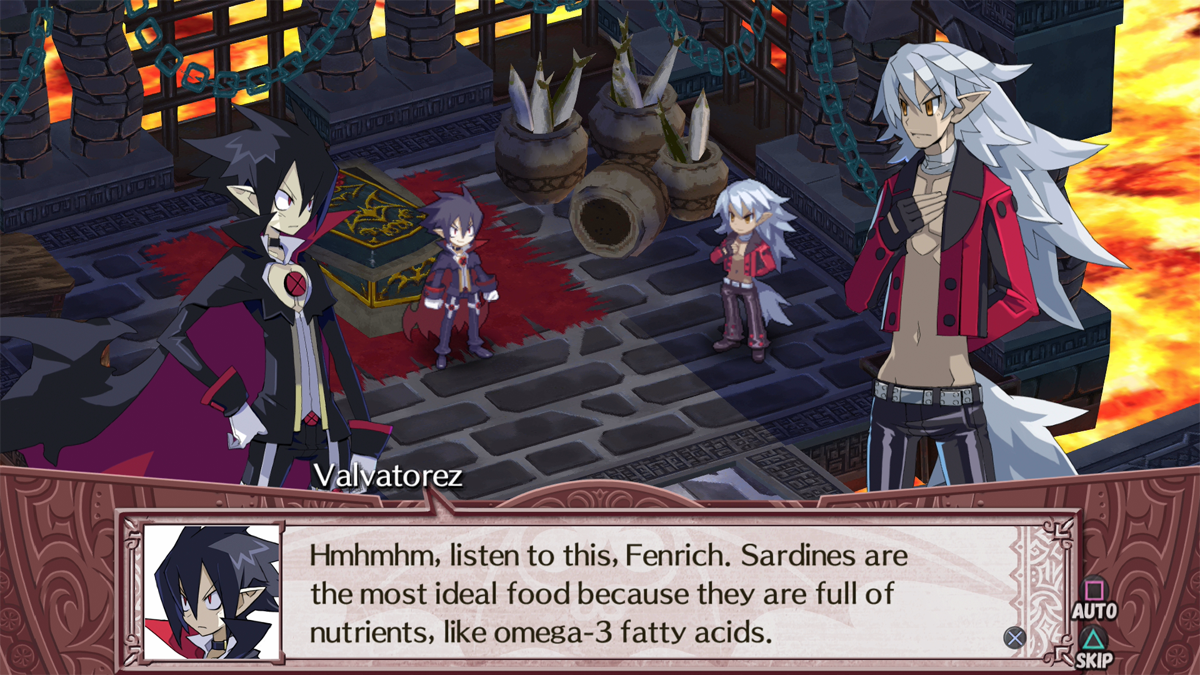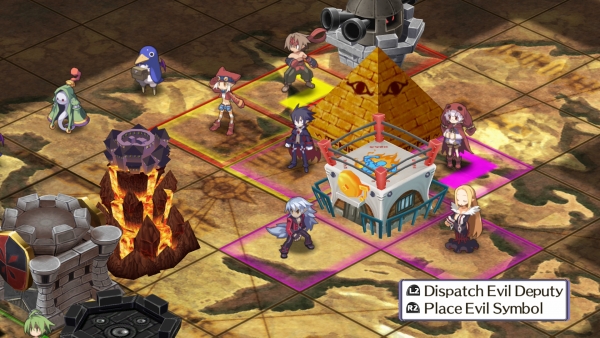Ed Notes: Few quick notes at the bottom, but here’s the TLDR:
We got a pre-release code for this game.
This article is spoiler free.
This article is NOT a Disgaea 6 deep dive.
Oh, and all of this is based on the Switch release.
Disgaea 6: Defiance of Destiny comes out tomorrow (well the English release does), and I think it’s pretty fucking great.
From a purely abstract sense, it also has one of the most interesting twists on the series’ mechanics that I’ve seen before.
See, one thing I’ve heard said a lot about Disgaea is that “The Game Doesn’t Really Start Till You Reach Endgame.” But I’d disagree with that statement. I’d say it’s more that Disgaea games don’t usually give you access or incentivize using the series’ unique mechanics until endgame.
Elements like reincarnating characters to boost their base stats, entering the Item World to level up items, and abusing the cheat shop for grinding don’t usually come into play before you beat the story. This is a bit of a shame, since they’re some of the more unique and interesting systems in the series. Usually, you don’t need or want to do any of these to beat the game’s main story.
Disgaea 6 doesn’t do that, and instead opts to bring these systems in and make you want to use them far, far earlier than previously.
So, before I spend several paragraphs gushing over the rest of the game, I do want to quickly talk about the elephant (and some accompanying mice) in the room. The game’s performance isn’t great. Disgaea 6 was originally released for PS4, and it’s also the first game in the series with 3D graphics. The end result is, regardless of what I set the graphics quality to, it looked like garbage when using my Switch as a handheld. Strangely enough, the low quality is entirely constrained to the tactics map and overworld. Menus, combat animations, and cutscenes all run good.
If graphics are potentially a deal breaker for you, I heavily suggest you download the demo from the eShop, and give that a whirl. I’ve heard tell that there may be performance improvements, and I plan to reach out to NIS to ask, but I don’t expect an answer anytime soon. So yeah, consider playing the demo first. (Your save also transfers over to the full game, so no reason not to.)
Elephant gone, time to talk about mice. This is the first game in the series with 3D graphics for characters instead of sprites. They are fine. I would not say that I love them. The special attack combat animations are much shorter and less complex than in previous games. I liked how over the top they were in previous games, but that might have just been me. Whatever, mice dealt with.
Okay, so let’s go back to talking about why this game is great. Like I mentioned above, Disgaea 6 incentivizes using all of the game’s ridiculous systems.
Reincarnation, the process of resetting a character back to level 1, in exchange for making their base stats and stat growth higher is a central part of the game’s story, and you’re actively encouraged to use it from the moment you start.
Auto-battle and Demonic Intelligence turn grinding from a slog into a task to be automated and perfected, making early game grinding feasible.
The Item World loop has been updated so that once an instance of an item has been boosted, that boost applies to any versions of the item bought at the shop. Now, instead of leveling dozens of boots, you level one, then buy half a dozen copies, with the end result being it’s much easier to get cool equipment across all your characters.
The Story Is Good. Not gonna say anything else on that one just yet, but yeah. It’s fun. (Although I didn’t like the English voice acting personally)
There are a lot of interesting risks and design choices with Disgaea 6. I don’t necessarily love all of them, but the game does a lot to allow earlier access to many of its series-defining mechanics, and I think that’s to its credit.
Disgaea 6 comes out tomorrow, and if you like tactics games, I cannot recommend it enough. If you’re already a fan of the series, I’d say you should get a day one copy. If you’ve been interested in playing, but always thought it felt a little overwhelming, Disgaea 6 is the most new player friendly entry into the series.
See you in the Netherworld, dood!
Editor’s Notes Ultimate Plus Complete Edition
- We reached out to NIS America and requested a pre-release code for Disgaea 6, which we received. Was it because of our blatant pandering? No idea, honestly they sent us the code like immediately after we requested it, we hadn’t even really kicked our “Pretty Please NIS, let us play it” campaign into high gear.
- This article is spoiler free, for reasons. Please don’t assume that this policy will apply to things here in the future about Disgaea 6, but we’ll try to give it a month after release (so anytime after July, it’s open season) before we start discussing spoilery… stuff.
- This article is what it sounds like: It’s a general set of thoughts on the game, why you might want to pick it up when it comes out tomorrow, etc. It’s not an exhaustive deep dive on any level, to any system in the game.

















